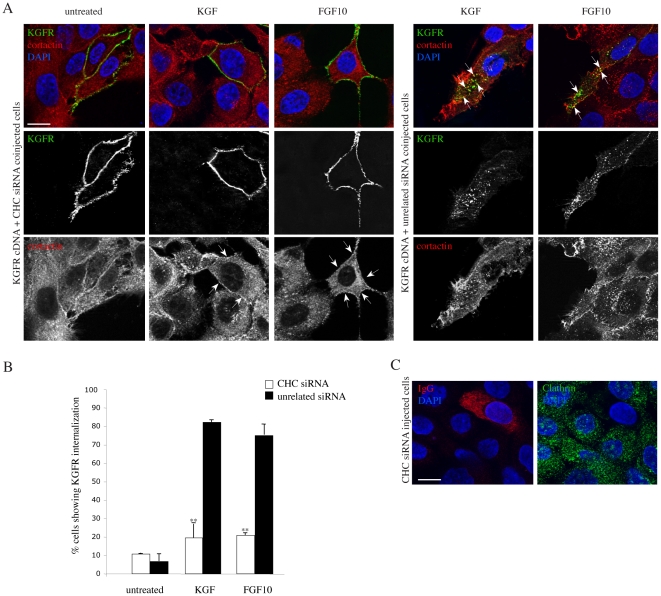Figure 5. Clathrin depletion affects KGFR polarization and cortatin recruitment to the endosomes.
A) HaCaT cells were coinjected with KGFR cDNA and CHC siRNA, to simultaneously obtain KGFR overexpression and CHC depletion, or with KGFR cDNA and an unrelated siRNA, as a control. After injection cells were serum starved, incubated at 4°C with the anti-Bek polyclonal antibodies, and treated with KGF or FGF10, as above. Upon KGF and FGF10 stimulation, in cells microinjected with CHC siRNA the receptor remains uniformly distributed on the plasma membrane and does not appear on intracellular dots, while the cortactin is dispersed throughout the cytoplasm and appears to be translocated just below the plasma membrane. In cells microinjected with the control siRNA, the KGFR is internalized and it colocalizes with cortactin in intracellular dots polarized at the leading edge of migrating cells. Bar: 10 µm. B) Quantitative analysis of percentage of HaCaT KGFR cells showing internalized KGFR was performed by counting 50 cells that overexpress KGFR for each condition, randomly taken from 10 microscopic fields in three different experiments, and values are expressed as the mean value ± standard errors (SE). C) HaCaT cells were coinjected with CHC siRNA and rabbit IgG to identify the microinjected cells. The immunofluorescence analysis was performed using anti-clathrin antibody: the punctate staining corresponding to clathrin-positive structures is reduced in microinjected cells compared to the surrounding uninjected cells. Bar: 10 µm.

